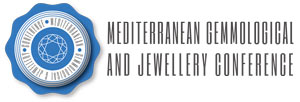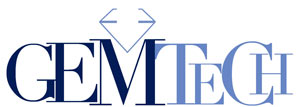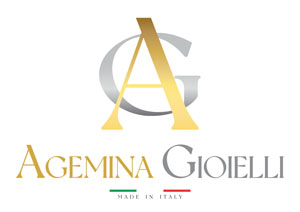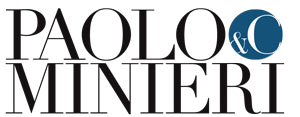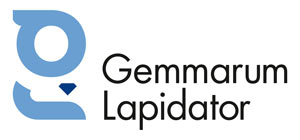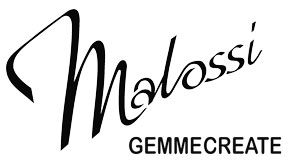Recently a pair of earrings marked S925 has been submitted to the R.A.G. gemmological laboratory (Turin, Italy) for identification of the two stones mounted on them. These stones appeared to be colorless, transparent, with strong dispersion and were round brilliant cut. The client was interested in their identification, given that on the website from which he purchased the product, N.O.D., no warranty or documentation was stated or issued at the time of sale.
It is just cubic zirconia
Tests have exhaustively proven that the stones under investigation are common cubic zirconia, despite the fact that the seller’s website refers to «27 different experiments to make our stones». It is beyond our comprehension what use these experiments were for, since CZ (Cubic Zirconia) appeared in large quantities on the market as early as in the 1970s and nowadays flood the market as very cheap stones1.

Standard and advanced gemological testing has been performed on the stones set in the earrings. At naked eye these show a vitreous to sub-adamantine luster and stronger dispersion (or fire) than diamond. At 10x magnification, the edge of the facets are noted to be slightly rounded and the internally the appearance is “hollow” and glassy. The refractive index is beyond the standard refractometer reading limit.
Samples were then analyzed by electron microprobe, with a JEOL JSM IT300LV electron microscope (High Vacuum – Low Vacuum 10/650 Pa – 0.3-30kV), equipped with EDS Oxford INCA Energy 200 microanalysis with INCA X-act SDD thin window detector (at the Electron Microscopy Laboratory of the Department of Earth Sciences, University of Turin).

The tests were carried out on the samples as they were, after fixing on the sample holder desk by means of conductive adhesive tape. The analyses must be defined as qualitative because, in order not to disassemble or damage the samples under examination, the flatness of the surfaces to be analyzed has not been ensured with respect to the incident electron beam; moreover, the tests have been conducted on samples not covered by conductive graphite, in order to leave them untouched and unmodified.
Measurements were conducted at multiple points on the table of both samples.

The EDS microprobe analyses clearly show (Figure 3) the presence of the elements oxygen (O) and zirconium (Zr), which immediately identifies the material as zirconium oxide (cubic zirconia). The presence of traces of hafnium (Hf), which always accompanies zirconium as an impurity or as a stabilizer, is also noted.
Subsequently, the stones were removed from the mountings for further examination. The mass was found to be 0.83 ct and 0.84 ct respectively. When placed table down on an inscription, both showed the so-called “read-through” effect, i.e. at naked eye the underlying writing can be easily observed in transparency. Under the microscope at 10x, inaccurate symmetry and polishing were evident. No inclusions or growth structures have been observed, and they were found singly-refractive. In dark field the pavilion of the two specimens, positioned table down, exhibited the typical monochromatic orange flash.
Density (hydrostatic method) was 5.97 and 5.79, respectively, while short-wave UV fluorescence was medium yellow and long-wave is zero. All tests conclusively demonstrate that the two specimens are cubic zirconia.
The main detected features are summarized in the table below.
| Chemical composition of the gemstones | Zirconium, oxygen, traces of hafnium. |
| Refractive index | Not detectable at refractometer. |
| Fluorescence UV SW | Medium yellow |
| Fluorescence UV LW | None |
| Density (hydrostatic method) | 5,97 ; 5,79 |
| Microscopic observations | No inclusions, no growth structure |
Conclusions
The web today offers a vast quantity of jewelry or costume jewellery products that are in many cases very cheap. Let’s leave to others the task of establishing the fairness of the proposed prices. The task of a gemologist remains to accurately reveal the nature of the material under investigation, though not each and every buyer can afford a professional consultation.
The test we have performed on these samples purchased from an e-commerce customer is all in all a routine job for a well-equipped gemological laboratory. Experienced readers will find nothing new here. Rather, the important aspect here is revealed by how nonchalantly gemological materials are marketed in Italy with no or little disclosure of their exact nature. Unlike in France, for example, there are no specific gemological regulations in force by law that can defend the consumers’ right to be fully informed about what they are shopping for. It is necessary that the selling party takes the responsibility to accurately and completely indicate what is being sold. In our specific case, the stones mounted on the jewel have been described in a rather opaque way, without ever mentioning a single specific term.
Notes
1 https://www.gia.edu/doc/SP81.pdf
Article by Raffaella Navone* and Emanuele Costa**, published on IGR – Italian Gemological Review #14 – Spring 2022.
* R.A.G., Turin, Italy.
** Department of Earth Sciences, University of Turin, Italy.
Read also the related article: After reading from the seller’s website, the identity of the product remains an unresolved riddle (note by IGR editorial team), published on IGR – Italian Gemological Review #14 – Spring 2022.





